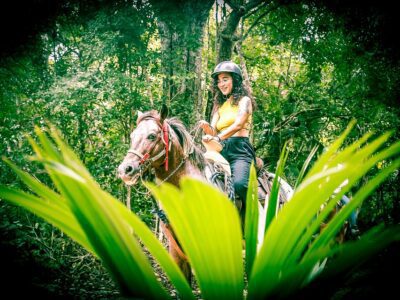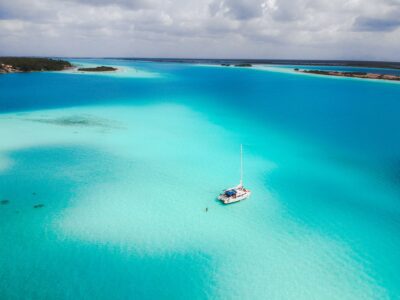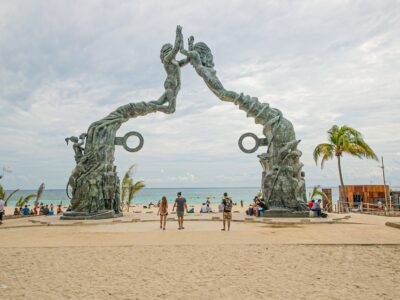In 2019, the fishing community of Celestún in Yucatán, Mexico, established a 324-square-kilometer (125-square-mile) Fishing Refuge Zone (FRZ), the largest in the Gulf of Mexico. This initiative was a response to the overfishing of sea cucumbers, a species that had rapidly declined, causing social unrest in the community.
Local fishers have been trained to monitor the refuge, aiding in the recovery of sea cucumbers and protecting other commercially important species like octopus and lobster. Women have played a crucial role in this process, leading community monitoring efforts.
A decade ago, the overfishing of sea cucumbers (Isostichopus badionotus) sparked controversy in Celestún. The extraction of this prized species allowed local fishers to prosper but also attracted ambitious businessmen and illegal fishing activities.
Yanely Jasaai May, a biologist from the community, recalled that violence erupted in many coastal areas during that time, leading to deaths and burned boats, and Celestún was labeled a “conflict community.” The sea cucumber nearly vanished from its natural habitat within a few years.
“The situation leaves its mark on you,” May said. “We were seen as a community that was depleting its resources.”
Celestún found a solution in the form of the FRZ. Established in 2019, the refuge zone aims to help recover the sea cucumber, which is now permanently banned from capture, and other species vital to the local fishing industry, including red grouper (Epinephelus morio), Mexican four-eyed octopus (Octopus maya), and Caribbean spiny lobster (Panulirus argus).
The effort required dialogue, organization, and support from local fishing cooperatives, as well as collaboration with the Secretariat of Sustainable Fisheries and Aquaculture of Yucatán (SEPASY) and the Mexican Institute for Research in Sustainable Fisheries and Aquaculture (IMIPAS). Local participation has been key to conserving and recovering species and repairing the community’s social fabric.
“We want the community not just to be viewed differently,” May said, “but to be an example of how social and ecological problems can change positively when people get involved and work together for the common good.”
Community Monitoring Efforts
Thirteen kilometers (8 miles) from the port of Celestún, on the eastern coast of the Yucatán Peninsula, mollusks, crustaceans, and fish thrive among algae, corals, grasslands, and sandy sea floors. José Ricardo Novelo Chac, president of the Federation of Fishing, Aquaculture, and Tourist Services Cooperatives of Celestún, said collective knowledge about the site motivated fishers to choose it as a refuge.
“It’s a rich area with a nutrient-filled seabed, and with a little care, it can repopulate on its own,” he said. “All we have to do is take care of it, and that’s what we’re doing.”
According to the National Commission for Aquaculture and Fisheries (CONAPESCA), the creation of the fishing refuge zone is a crucial tool for conservation and the sustainable use of species in Celestún. It has allowed for a gradual increase in animal populations, which then spill over into legal fishing areas.
“The refuge zones are like a ‘savings fund,’ and their primary characteristic is that they’re based on a community approach,” said Mariana Suasnávar, natural resources manager and climate change specialist for Community and Biodiversity (COBI), a local organization assisting in monitoring the fishing refuge.
Community and Officials Collaborate to Protect Marine Resources in Celestún
With the support of officials, the community of Celestún has designated an area where fishing activities are temporarily regulated and restricted to allow resources to regenerate and ecosystems to thrive. “The effect is that they’ll spread,” said Suasnávar. “The fish won’t stay in the designated area but will move to other places where they can be fished. The community sees this as a long-term strategy for conserving its resources.”
The goal is to build resilience among marine species and the people who depend on fishing, Suasnávar explained. To achieve this, Celestún established the Yucatán Coast Submarine Monitoring Community Group, a collaborative initiative by SEPASY, IMIPAS, and COBI. This group trains fishers and coastal community members in scuba diving, first aid, underwater monitoring, and species identification.
The group consists of 12 men and 14 women from 11 Yucatán communities, who engage in citizen science activities through underwater monitoring and data collection, including substrate types, invertebrate species, and fish species. Three women from Celestún are certified for scuba dive monitoring, while others assist with data gathering.
“They’re trained in open sea scuba diving and, for monitoring work, they arrive at 7 in the morning to conduct activities in the area,” May said. “The monitors know how to identify species while taking all necessary precautions.”
Women’s participation has increased, May noted, as they work to break the stigma that the ocean is a place for men only. “It’s often thought that women are only in administrative roles, but we can do the same things that men can. That’s why we need to recognize and encourage others because these activities are empowering and help us feel represented.”
The most recent monitoring took place in July. COBI conducted a campaign in the Celestún FRZ in collaboration with IMIPAS, the Community Underwater Monitoring Group of the Yucatán Coast, the Celestún-FRZ Management Committee—comprising about 60 fishing families—and the Community Center for Underwater Research and Monitoring (Cecims) of the Mexican Caribbean.
Over four days, the team completed 60 50-meter (165-foot) transects and involved 30 divers across 15 sites in the Celestún FRZ. Using a methodology designed by IMIPAS and COBI, they recorded 38 species of fish and surveyed more than 4,500 organisms. Although the final data are still being processed and results won’t be available until December, researchers confirmed they also recorded 1,723 invertebrates across 13 species and four genera. Among the fish species were Haemulon plumierii and H. Aurolineatum from the chac-chi family, and Ocyurus chrysurus from the snapper family, which together represented more than 65% of the recorded organisms.
This information helps researchers better understand marine biodiversity, ecosystem health, and the status of commercially valuable species populations, Suasnávar said. It also allows for early detection of changes in the marine environment, such as habitat deterioration, the appearance of invasive species, and impacts from climate change.
“Fishermen say they’ve observed positive results in the recovery of some species, including the Maya octopus,” May added.
Combating Illegal Fishing
Celestún fishers use community surveillance and the maritime culture of the FRZ to combat illegal fishing. They organized a committee with groups that take daily shifts visiting the FRZ and installed floating cages—12 meters (39 feet) in diameter, made of PVC pipe—for breeding and growing yellowtail snapper (Ocyurus chrysurus) and spotted seatrout (Cynoscion nebulosus).
Sustaining the Refuge: A Community Effort
“Since we were already taking care of the refuge, we needed a way to sustain it,” Novelo explained. “We came up with the idea of creating floating cages. We set quotas for each cooperative and small permit holders to buy petrol or fish food, and we look after them. This ensures 24/7 surveillance of the area, 365 days a year.”
Despite ongoing illegal fishing in Celestún, the protected area is respected because it benefits the community.
Novelo, who started fishing at 14, recalled, “I would pull in a fish and the entire school would come up with it.” While that abundance no longer exists, the creation of the refuge offers hope for change.
“Now, near the cages, you throw a little food and the fish gather,” Novelo said. “Dolphins are also attracted to the cages because of the sardines. There’s been considerable repopulation not just inside the cages but throughout the refuge. Our goal is to repopulate the entire area.”
Although sea cucumber populations are recovering slowly, species like octopus, hogfish, and gray snapper are showing signs of repopulation. Novelo noted that other fishers, who once doubted the project, are now joining the effort. This initiative has also increased women’s participation, with women now making up half of the refuge’s board of directors.
“Illegal fishing has been a cancer,” Novelo said, “but we’ve caught it in time and started to cure it. Celestún was disorganized, but thanks to the refuge, there are significant efforts to change things. What’s missing is official support to stop illegal activities.”
Celebrating the FRZ
In mid-August, for the third consecutive year, the community hosted the Celestún Fishing Refuge Zone Festival to promote social unity and the use of the protected area. The three-day festival included awareness workshops, sustainable cooking contests, community cinema, sports, and cultural activities. May emphasized that the fishing refuge has sparked a community movement.
“We’ve tried to involve children, teenagers, and women through various awareness talks,” May said. “During the refuge festival, we promote the area and fundraise. Fishermen and local businesses interested in the project contribute what they can.”
The community hopes this knowledge will reach local schools.
“We’re looking for a way for the Yucatán state government to offer primary and secondary schools a small conservation class so that children and young people grow up with the mindset that we need to care for the ocean,” Novelo said. “It’s not like it was before when we thought species would never disappear.”
May added that the ideal scenario for Celestún is a future with abundant fish. While octopus and lobster fisheries decline nationwide, the community hopes their efforts will lead to the repopulation of marine species they depend on. It’s also encouraging that more fishers are joining the conservation effort, finding it a good alternative to illegal fishing.
“Celestún is a very special place,” May said. “We’re surrounded by water, with the beach on one side and the coastal lagoon on the other. We have many bird species, like the flamingo, that are emblematic of us. Previously, Celestún was seen as a troubled port with common predation and illegal fishing. But with this initiative, we want visitors to see the ocean as we do.”
TYT Newsroom
The post Celestún Refuge Combats Illegal Fishing first appeared on The Yucatan Times.














